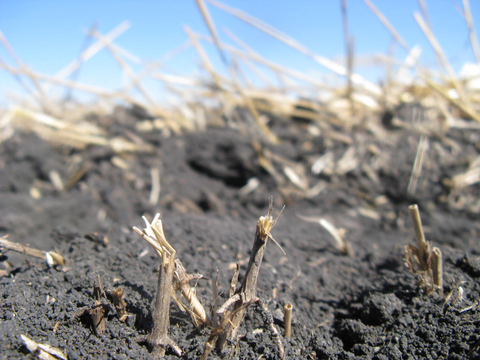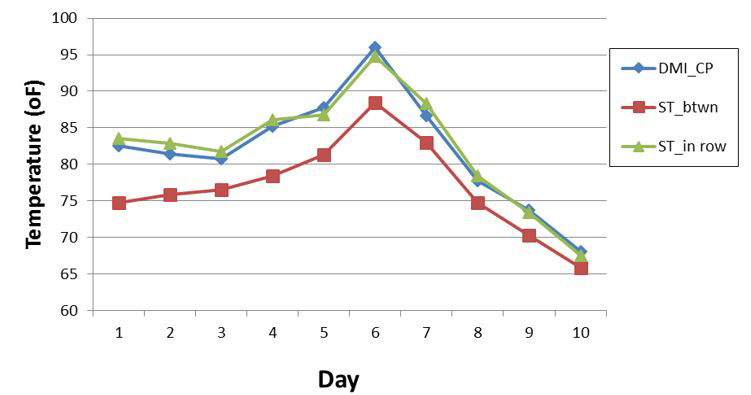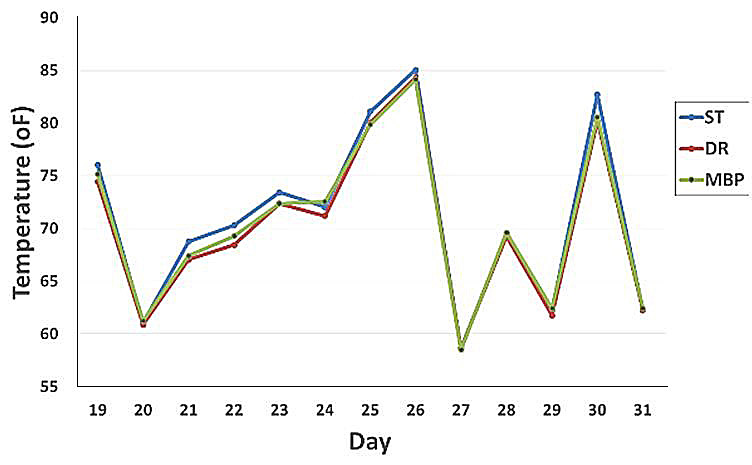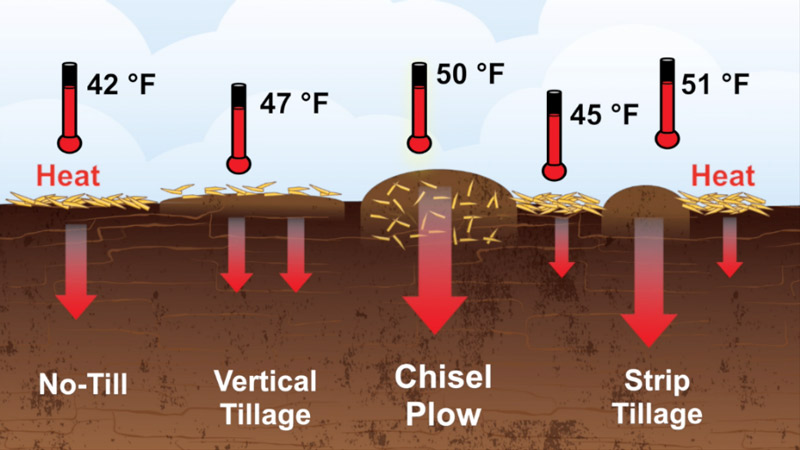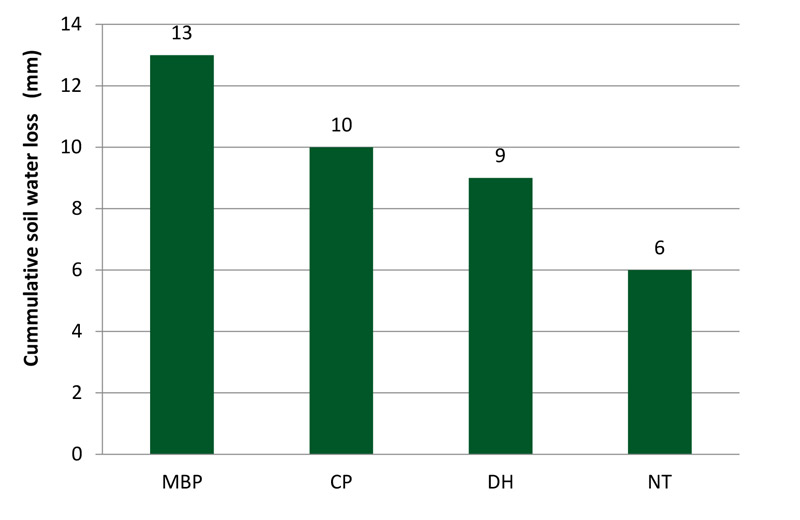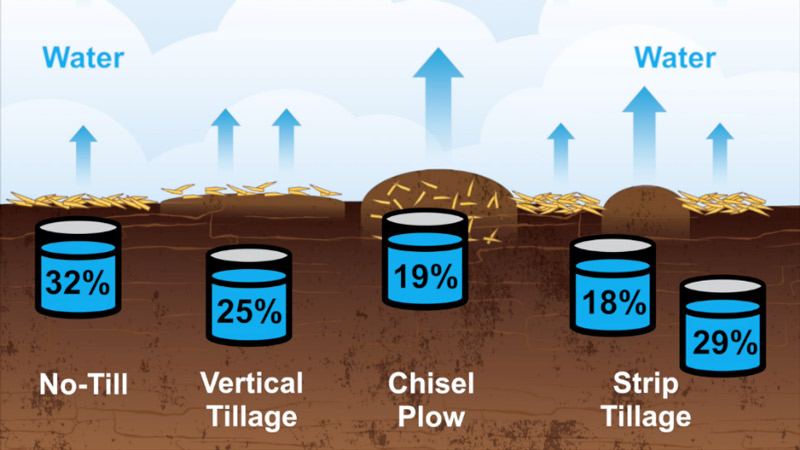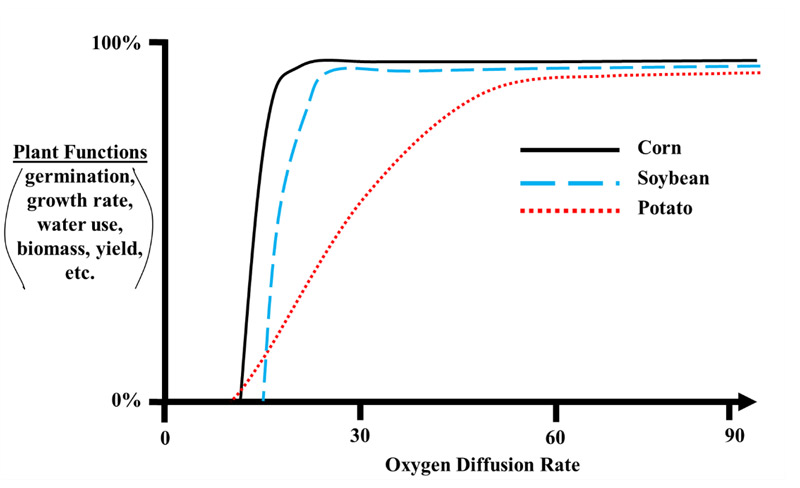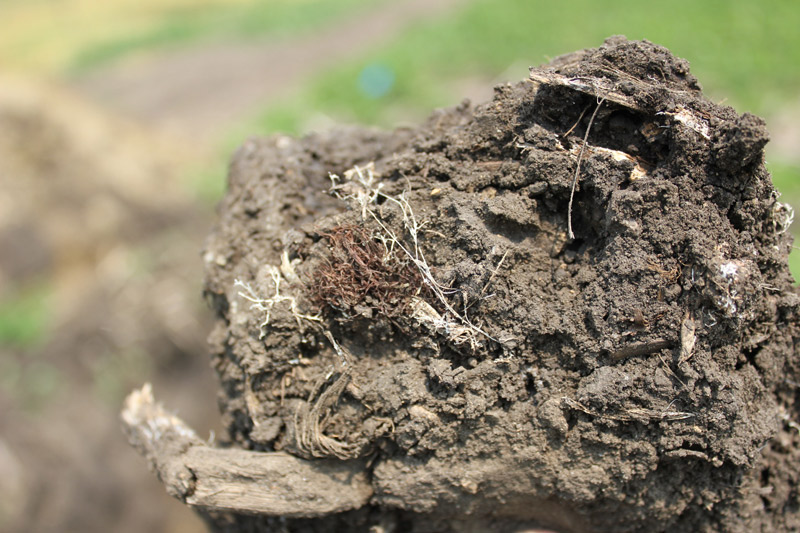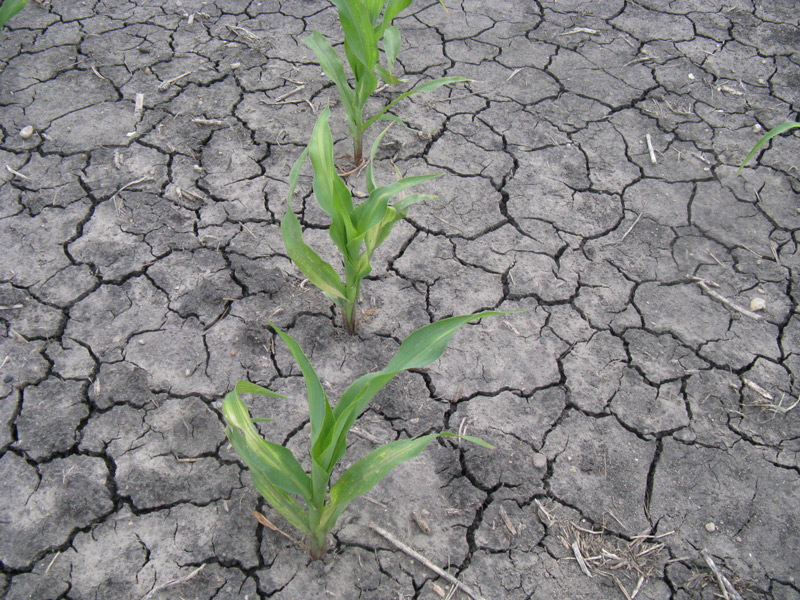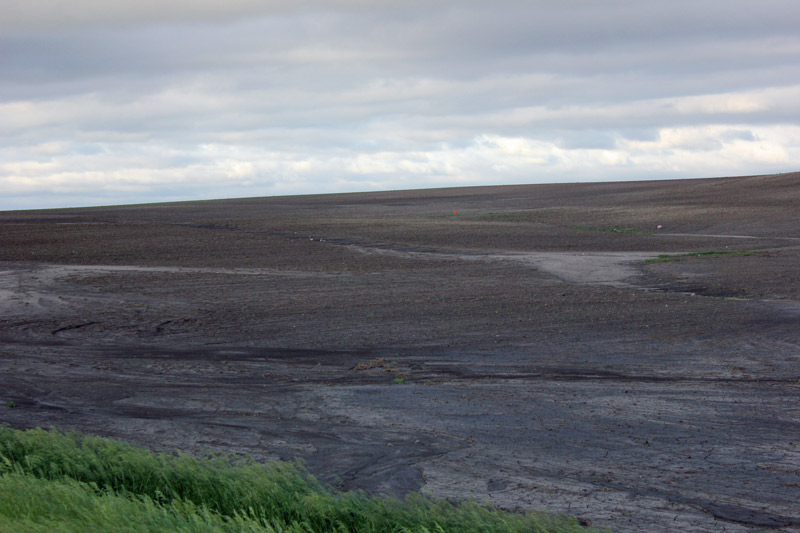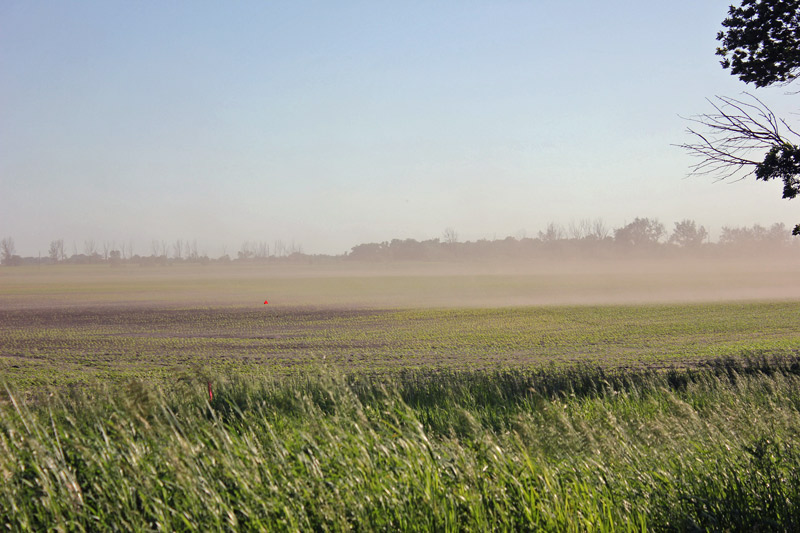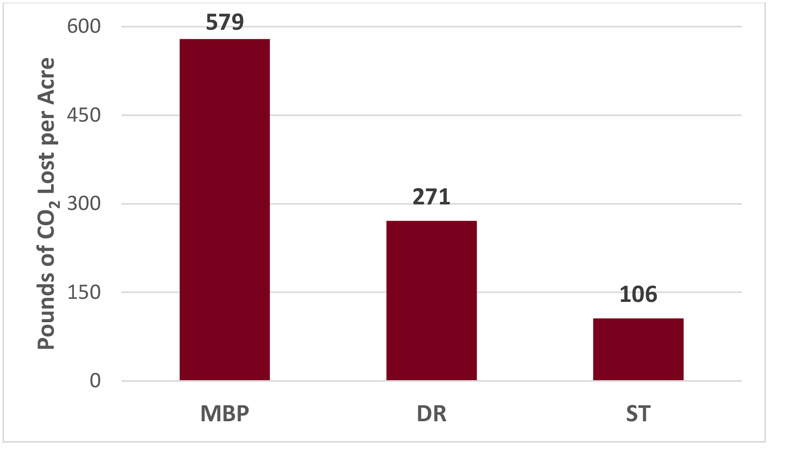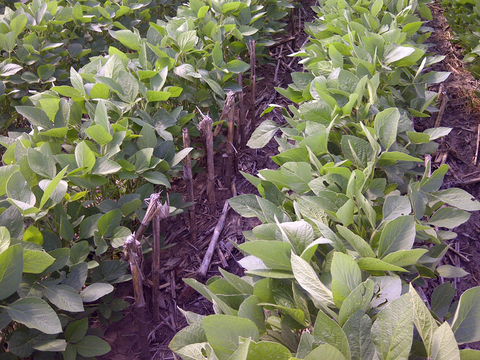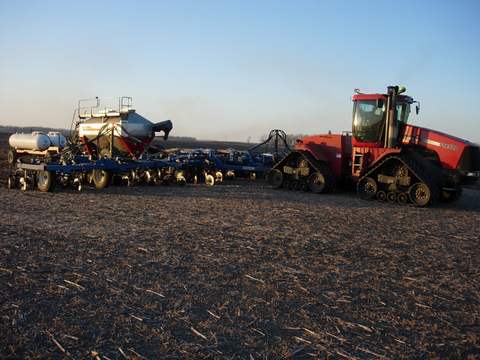Reducing soil tillage intensity presents many benefits, challenges and some required changes to your field operations. Benefits include:
- Reduced soil erosion, fuel use, time and labor.
- Building soil organic matter.
- Improved soil structure.
- Maintaining options for soil warm up and dry down in the spring months.
Conversely, the challenges include:
- Learning a new tillage system.
- Changing equipment costs.
- Managing residue build-up over time.
- Patience.
- Perhaps going against local traditions.
Benefits of reduced tillage
Seedbed preparation is all about setting a hospitable environment for seeds to germinate and thrive.
It’s much like your own home, optimizing your house’s heating, cooling and insulation and also stocking the pantry to provide comfort throughout the changing seasons. The seedbed is no different.
By optimizing your seedbed to handle whatever Mother Nature decides to throw at you, you’re providing your crop the best chance to quickly develop a stronger stand and produce to its full potential.
Spring soil temperature
The higher the soil temperatures in the spring, the faster your crop will emerge and establish a strong stand.
Early crop emergence and stand establishment promote an earlier crop canopy closure. This reduces the germination of weeds during the mid and late seasons and gives your crop a better chance to withstand disease and insect pressure.
Crop residues on the soil surface have a low density, meaning they’re light and have a large amount of air in and around them. This air gives crop residues an insulating effect on soils, similar to fiberglass insulation in attics.
The thickness of the crop residue layer covering the soil surface governs how quickly heat from solar radiation will move into the soil during the spring months until the crop canopy closes. A soil with a thick crop residue layer covering 70 percent of the surface will heat up more slowly than a soil with a few fragments of residue covering 10 percent (Figure 1).
This is why it’s important to make sure residue is evenly spread behind the combine, to avoid areas of excessively thick residue. Also, crop residue typically is light in color, which reflects more solar radiation back up into the atmosphere than a darker color would. As a result, less heat reaches the soil surface.
Tillage practices
Soil temperature changes due to the depth and aggressiveness of the tillage implement used. Deep tillage implements, such as the moldboard plow and disk ripper, leave less than 15 and 45 percent of crop residues covering the soil surface, respectively.
Medium-depth tillage implements, such as the chisel plow, strip till, ridge till and disk also leave 30 to 60 percent of crop residues covering the soil surface. If you use a field cultivator as a secondary tillage option, the amount of crop residue covering the soil surface will decrease to 20 to 30 percent.
Soil temperatures in the plant row may differ somewhat among all tillage options during the hottest portion of a few spring days. However, the soil temperatures will most often tend to be quite similar, particularly during the evening, nights and morning, as well as after rainfall.
Strip-till implements move crop residues to the side of where the plant row will be placed. Because the residue is all but completely removed from the plant row, soil temperatures in the strip will be similar to soils tilled with a moldboard plow, disk ripper, chisel plow and disk.
Research: Study 1
North Dakota State University research in the Red River Valley (Prosper, N.D., and Moorhead) during 2007 indicated comparable soil temperatures between a single fall strip till pass and a fall primary chisel plow pass followed by a spring secondary field cultivation pass.
The University of Minnesota performed similar research during 2011 and 2012 in southern Minnesota with an aggressive strip till implement, a disk ripper and a moldboard plow in a corn-soybean rotation (Figures 2 and 3).
They also observed similar soil temperatures among these tillage options. However, soil temperatures were lower and more soil moisture was conserved in the areas where the strip tiller moved crop residues between the plant rows.
Research: Study 2
In 2015, a joint project by the University of Minnesota and North Dakota State University at four field sites with varying soil textures (sandy loams to silty clays) demonstrated similar patterns among these tillage practices. However, in these fields, shallow vertical tillage and no-till were included and evaluated for soil temperatures.
As expected, the shallow, less aggressive vertical-till implement caused soils to be several degrees cooler and no-till temperatures were the coolest. This is due to the higher crop residue cover during the spring months as compared to strip till and chisel plow implements (Figure 4).
Research on strip till has consistently shown over time that soil temperatures in the spring depend more on where crop residue is placed rather than the percent cover.
The advantage of higher soil temperatures in strip till berms compared to no-till is demonstrated by faster plant emergence and crop development. This advantage is greatest when soil temperatures approach the lower threshold for crop seed germination.
For example, early-planted strip-till corn or soybeans will likely emerge sooner than in a no-till system. Early plant establishment frequently translates into higher crop yields and quality.
Soil moisture
Crop residues left on the soil surface help snow and rainwater enter the soil and then conserve that water as soil moisture for later use by the crop. Crop residues covering the soil surface over winter help to trap snow (Figure 5).
The trapped snow can help prevent the soil from freezing as deeply as a bare soil without crop residue cover. When the snow melts, it can then move through the residue layer and easily into the soil.
When spring and summer rains come, the crop residue protects the soil from the falling water, preventing it from forming a crust and sealing. As the crop residue intercepts rainwater, the water can gently move through the layer of residue and into the soil.
However, the crop residue’s job isn’t done yet. The layer of residue then reduces the amount of soil water lost to the atmosphere via evaporation by acting as a barrier. By reducing evaporative losses and conserving the soil moisture, that water will be available for plants, particularly later in the growing season during the plant's reproductive stages.
However, too much moisture can be as bad as too little moisture. When planting in the spring, excessively high soil moisture can create issues with trafficability on weak, poorly structured soils.
Nearly all soils are most vulnerable to compaction when 80 to 85 percent of the soil pores are full of water. Additionally, if compaction layers prevent the soil from adequately draining excess soil moisture, the seedling’s vulnerability to seed rot and damping-off diseases, such as Pythium, increases as the soil warms up.
When spring and summer rains come, the crop residue protects the soil from the falling water, preventing it from forming a crust and sealing. As the crop residue intercepts rainwater, the water can gently move through the layer of residue and into the soil.
However, the crop residue’s job isn’t done yet. The layer of residue then reduces the amount of soil water lost to the atmosphere via evaporation by acting as a barrier. By reducing evaporative losses and conserving the soil moisture, that water will be available for plants, particularly later in the growing season during the plant's reproductive stages.
However, too much moisture can be as bad as too little moisture. When planting in the spring, excessively high soil moisture can create issues with trafficability on weak, poorly structured soils.
Nearly all soils are most vulnerable to compaction when 80 to 85 percent of the soil pores are full of water. Additionally, if compaction layers prevent the soil from adequately draining excess soil moisture, the seedling’s vulnerability to seed rot and damping-off diseases, such as Pythium, increases as the soil warms up.
Soil moisture: Tillage practices
Aggressive tillage implements, such as the moldboard plow, disk ripper, chisel plow and disk, cause the soil to quickly lose some of its moisture to the atmosphere. In a U.S. Department of Agriculture Agricultural Research Service (USDA-ARS) study, researchers measured the loss of soil moisture during the first 80 hours after using a variety of soil tillage implements.
As shown in Figure 6, areas tilled with a moldboard plow (MBP) lost 23 percent more moisture than areas tilled with a chisel plow (CP) and twice as much moisture than areas with no tillage (NT).
In 2015, during the same joint project by the University of Minnesota and North Dakota State University, four field sites of varying soil textures (sandy loams to silty clays) showed soil moisture differences among tillage practices during the spring. In these fields, shallow vertical tillage resulted in the soils being 7 percentage points drier on average (Figure 7) than no-till.
In contrast, the more aggressive chisel plow and strip-till implements caused soils to be 13 to 14 percentage points drier than no-till, due to little crop residue covering the soil surface. However, soil moisture between the strip-till berms was between the moisture levels measured in the no-till and vertical till plots.
Soil in the strip-tilled berm dried down and warmed up similar to the chisel-plowed plots. However, while the areas between the strip till berms, which were just a few inches away, weren’t disturbed, they still provided a modest amount of drying and warming (3 percentage points more than the no-till plots).
Strip-till tended to present the best of both chisel plow and no-till management. Promoting and preserving soil structure between the strip-till berms provides better drainage of excessive moisture during high rainfall springs, and more strength for spring traffic compared to tillage practices that demote soil structure.
Aeration
Plant roots require a minimum amount of oxygen at all times to maintain metabolic functions. Plant roots and soil microbes release carbon dioxide, which can affect oxygen availability if aeration is limited.
Oxygen moves through water 10,000 times more slowly than through air. If soil moisture persistently stays near saturation, the crop has a high likelihood of drowning (Figure 8). This emphasizes the need for soils to be able to quickly drain the excess soil moisture during years with heavy or persistent rainfall.
Different crops have different minimum soil oxygen diffusion rate requirements before nearly every metabolic process in the plant deteriorates (Figure 9). This means that some crops in your rotation may handle wet springs fairly well, whereas other crops may be severely affected after a few days of enduring high soil moisture.
Aeration: Tillage practices
Aggressive tillage implements fluff up the soil, increasing the amount of pore space and air in the soil. The fluffed-up soil can readily dry by evaporation after most rainfall events, allowing oxygen to meet crop needs.
However, drying by evaporation can only provide so much benefit. If rainfall becomes heavy or frequent, high soil moisture levels may persist for long periods, causing risk to the crop.
During these times, soils with good soil structure (soils with several years of reduced or no tillage) are much more efficient at draining this excess moisture from the seedbed and allowing air to enter through the largest pores. However, if rains are so heavy and frequent to bring the groundwater level up within the topsoil, then evaporation or drainage may not be able to provide much relief to the crop unless fields are tile-drained.
Soil structure is formed by the aggregation of individual soil particles (clay, silt, sand, pieces of organic matter) into peds.
Soil aggregation is the movement and then sticking together of soil particles. There are many large pore spaces between the aggregates, which allow roots to penetrate the soil more easily and air and water to readily pass through.
Microscopic bacteria and fungi in the soil, as well as plant roots, play a vital role for soil particles to stick and stay together as peds. Their sticky exudates and hyphae physically hold the soil together, helping soil structure form and persist over time (Figure 10). The more diverse and abundant the microbial population, the faster the soil aggregation.
Benefits of good soil structure
Benefits of improved soil structure include
-
Reduced bulk density
-
Increased aggregate stability
-
Resistance to soil compaction
-
Improved water infiltration and drainage
-
Enhanced retention of plant-available water
-
Reduced nutrient leaching
-
Less soil erosion
-
Enhanced biological activity
-
Increased soil organic matter
How tillage affects soil structure
All benefits are based on building or preserving soil structure. Tillage breaks apart soil aggregates, damaging the existing soil structure. Over time, tillage also reduces soil biological life and diversity.
The deeper and more aggressive the tillage, the less structure the soil will have. This leads to an abundance of individual soil particles, which can clog pores and crust the soil surface, slowing water infiltration and increasing runoff (Figure 11).
Soil loss via wind and water
Smaller soil particles are also highly susceptible to being swept away with wind and water. Valuable topsoil moves into the ditch, or the neighbor's field or the next state, and is lost forever.
Compaction
Additionally, as the soil loses structure, it becomes denser and more susceptible to compaction, which is the loss of larger pore spaces. Compaction slows root growth and limits water-holding capacity.
Repeated tillage operations at the same depth may cause serious compacted layers, or tillage pans, just below the depth of tillage. As a result, higher horsepower equipment is needed to get through compacted soil and it suffers more wear-and-tear.
Reducing tillage helps preserve the soil's natural structure, making the soil more resistant to erosion and the negative effects of heavy field equipment.
Soil is a non-renewable resource and can’t be built within our lifetime. When it’s gone, it’s gone. While erosion is a natural process, cultivation of the prairie and the dominance of annual crops have significantly sped up soil erosion. The loss of topsoil severely diminishes a field's productivity.
You can’t change the soil texture in a field. However, you can increase or decrease the level of soil organic matter via management practices.
This makes your management choices very important because soil organic matter is related directly to soil fertility, soil structure and agricultural productivity potential.
Advantages of high soil organic matter levels
Other advantages to increasing or maintaining a high level of soil organic matter include:
- Reduced bulk density
- Increased aggregate stability
- Resistance to soil compaction
- Enhanced fertility
- Reduced nutrient leaching
- Resistance to soil erosion
- Improved water infiltration and drainage
- Enhanced retention of plant-available water
- Enhanced biological activity and diversity
Biological processes
You may have read articles where the term soil organic matter (SOM) is used interchangeably with soil organic carbon (SOC). This is because soil organic matter is 58 percent organic carbon. Carbon is invisible to the eye, making it difficult to understand how soil management affects it. Fortunately, researchers can measure carbon in the soil and in the atmosphere.
Soils continuously store carbon and then release some of it in natural processes. Soil tillage speeds up this process by warming the soil and incorporating oxygen and crop residues into the soil.
The soil microbe population, particularly bacteria, increases in response to the tillage and these additional food sources. Microbes consume the carbon from the crop residue and the soil organic matter, accelerating the conversion of organic carbon into carbon dioxide gas (CO2), which is then released into the atmosphere.
By accelerating this process, the carbon in the crop residue quickly turns into a gas and leaves the soil, instead of slowly breaking down and forming soil organic matter. Over time, soil organic matter levels and their related advantages decrease with soil tillage.
Research: Methods that reduce soil CO2 emissions
It’s important to identify tillage methods that reduce the amount of carbon released into the atmosphere.
Study 1
A Minnesota study conducted in 2005 compared soil CO2 emissions following fall moldboard plowing (MBP), disk ripping (DR) and strip tilling (ST), and determined that strip tillage maintained more soil carbon than moldboard plowing and disk ripping.
Disk ripping and strip tillage released 53 and 83 percent less CO2 from the soil than moldboard plowing (Figure 15). Moldboard plowing disturbed and exposed the greatest amount of soil, allowing carbon as CO2 or previously stored as organic matter to escape into the atmosphere. The deeper and more aggressive the tillage, the more soil carbon was lost.
Study 2
In another Minnesota study, three tillage systems ranging in soil disturbance were compared to no-till.
In this study, wheat residue produced from the previous season’s crop added 2,840 pounds of organic matter per acre. When the soil was moldboard plowed (MP), the soil lost over 3,800 pounds of organic matter per acre within 19 days after the primary tillage pass. This is 1,000 pounds more than what was added by the previous crop’s residue (Figure 16).
This system will continue to lose more carbon in the spring when the field is prepared for planting. If this MP system is continuously used, the organic matter content will decrease over time.
These values are substantially greater than the no-till (NT) treatments, which lost only 770 pounds of organic matter per acre due to natural carbon cycling processes. The disk harrow (DH) and chisel plow (CP) were in the middle range of organic matter lost.
Evaluating the economics of tillage systems is very complex. Give consideration to:
- The initial cost of the implement
- Financing charges
- Maintenance costs
- The size of tractor needed to pull the implement
- Equipment depreciation
- Labor costs
- Conservation program incentives
- Increased management costs related to fertilizer and pest management
Reducing tillage means fewer trips across the field, conserving energy, fuel and labor and reducing machinery maintenance.
Changing tillage practices
When considering a change in tillage practice, you’ll need to change many other parts of your system. For example, weed control and fertilizer applications that worked with chisel plowing likely won’t work well for a no-till system, and vice versa.
Changes to the system may not always line up well with family or neighbor traditions and perceptions. Increasing your farm’s efficiency will likely require a combination of traditional and innovative adjustments to field operations in order to achieve the greatest economic gains.
Shift to perennials
Reduced tillage and additional surface residue may increase perennial weed pressure. It’s important to adjust your weed management program to fit your tillage system.
When reducing tillage, start with relatively weed-free fields. Effective weed management in a reduced tillage system includes using soil-residual herbicides, well-timed post-emergence herbicide applications, crop rotation and herbicides with multiple modes of action.
Tillage’s effect on weed seed survival
A weed seed bank’s persistence varies by tillage system and weed species. Less intensive tillage will likely favor small-seeded weeds that emerge from shallow depths. More intensive tillage buries weed seeds, protecting them from seed predators and increasing their persistence.
Seeds’ proximity to the surface
Weed seed bank degradation is greatest near the soil surface. Seeds near the soil surface are more accessible to seed predators like rodents and insects and are more likely to be degraded by soil microorganisms.
No-till systems don’t have tillage to incorporate weed seeds, which concentrates the weed seeds near the soil surface where they’re more likely to be degraded. More intensive tillage buries weed seeds deeper in the soil and results in a more uniform distribution of weed seeds in the soil.
Weed seeds become more dormant when buried, which prevents them from germinating until they’re brought back to the soil surface. No-till and minimum-till systems that concentrate weed seeds near the soil surface generally result in an increase in small-seeded weeds that germinate at shallow soil depths.
Seed size
Large-seeded weeds generally decrease in prevalence with less tillage, as seed predators can easily find weed seeds on the soil surface and large-seeded weeds generally don’t germinate unless incorporated. Although tillage system influences seed bank degradation and seed persistence, there’s a large amount of variation among weed species (Tables 1 and 2).
Table 1: Broadleaf weed seed persistence in soil
| Species | Seed population reduction: 50 percent | Seed population reduction: 99 percent |
|---|---|---|
| Lambsquarters | 12 years | 78 years |
| Velvetleaf | 8 years | 56 years |
| Redroot pigweed | 3 years | 20 years |
| Curly dock | 3 years | 17 years |
| Waterhemp | 2 years | 16 years |
| Common ragweed | 1.5 years | 10 years |
| Giant ragweed | 0.5 year | 2 years |
| Kochia | 0.5 year | 2 years |
Table 2: Grass weed seed persistence in soil
| Species | Seed population reduction: 50 percent | Seed population reduction: 99 percent |
|---|---|---|
| Yellow foxtail | 5 years | 30 years |
| Barnyardgrass | 2 years | 10 years |
| Large crabgrass | 1.5 years | 8 years |
| Giant foxtail | 1 year | 5 years |
Nitrogen
Tillage system choices will affect nutrient management practices. For example, surface-applied nitrogen (N) fertilizer, such as granular urea or urea-ammonium nitrate (UAN) solution, should be incorporated mechanically or by rainfall within three days of application. This reduces N loss from volatilization.
Other N application alternatives in a reduced tillage system include applying urea or UAN to the side of the row with a coulter at planting time. Additionally, because anhydrous ammonia is injected into the soil, it’s considered a minimum tillage pass (Figure 18).
Farming is ever-changing. Practices that were once the norm have been replaced by more efficient, profitable and environmentally sound systems.
This is very true for tillage. Within one’s lifetime, moldboard plowing has been replaced by chisel plowing, and chisel plowing has been replaced by low-disturbance systems such as strip-till and no-till. Change is difficult for some, but those willing to break with tradition to try something different are often rewarded.
Public perception
The public’s perception of agriculture is also changing. Less than 2 percent of the U.S. population actively farms. As the general population becomes further removed from food production, there’s less understanding about modern agricultural practices and the balancing act between production and environmental risk.
Tillage can play a major role in mitigating some of these risks. While selecting the proper tillage system may not solve all issues, it’ll help keep the soil and nutrients on the land.
Handling changes
As you deal with change, display patience. If you want to produce crops at the lowest cost per unit of yield possible, factor in tillage selection and its implementation into the calculation. Adapting to a tillage system may take time, as it’s fine-tuned to the soil, crop rotation and the farmer's ability. Patience is an important key to reaching success.
DeJong-Hughes, J., Franzen, D. & Wick, A. (2018). Reduce wind erosion for long term profitability.
Faaborg, R., Wente, C., DeJong-Hughes, J. & Reicosky, D.C. (2005). A comparison of soil CO2 emissions following moldboard plowing, disk ripping and strip tilling. Research Updates. USDA-ARS.
Glinski, J. & Stepniewski, W. (1985). Technology & Engineering. Soil aeration and its role for plants. CRC Press.
Gunsolus, J., Wyse, D., Moncada, K., & Fernholz, C. (2010). Weed Management. Risk management guide for organic producers. University of Minnesota.
Mallarino, A.P. & Borges, R. (2005). Phosphorus and potassium distribution in soil following long-term deep-band fertilization in different tillage systems. Soil Science Society of America Journal, 70(2), 702-707.
Overstreet, L.F., Cattanach, N.R., Gegner, S. & Franzen, D. (2007). Crop sequence effect in sugarbeet, soybean, corn, and wheat rotations (Sugarbeet research and extension reports). North Dakota State University.
Papiernik, S.K., Lindstrom, M.J., Schumacher, T.E., Lobb, D.A., Schumacher, J.A., & Farenhorst, A. (2004). Variation in soil properties and crop yield across an eroded prairie landscape. [CD ROM]. Madison, WI: American Society of Agronomy.
Reicosky, D. & Lindstrom, M. (1993). Fall tillage method: Effect on short-term carbon dioxide flux from soil. Agronomy Journal, 85(6), 1237-1243.
United States Department of Agriculture-National Agricultural Statistics Service (USDA-NASS). (2012). 2012 Ag Census. Available online at https://agcensus.library.cornell.edu/census_year/2012-census/.
United States Department of Agriculture-Natural Resources Conservation Service (USDA-NRCS). 2012. National resources inventory summary report.
Credits
Content is a collaboration between the University of Minnesota and North Dakota State University.
Peer review was provided by Richard Wolkowski, emeritus Extension soil scientist, University of Wisconsin-Madison. Thanks to Jared Goplen for providing assistance with editing. Photos are provided by Jodi DeJong-Hughes unless otherwise noted.
Reviewed in 2022


